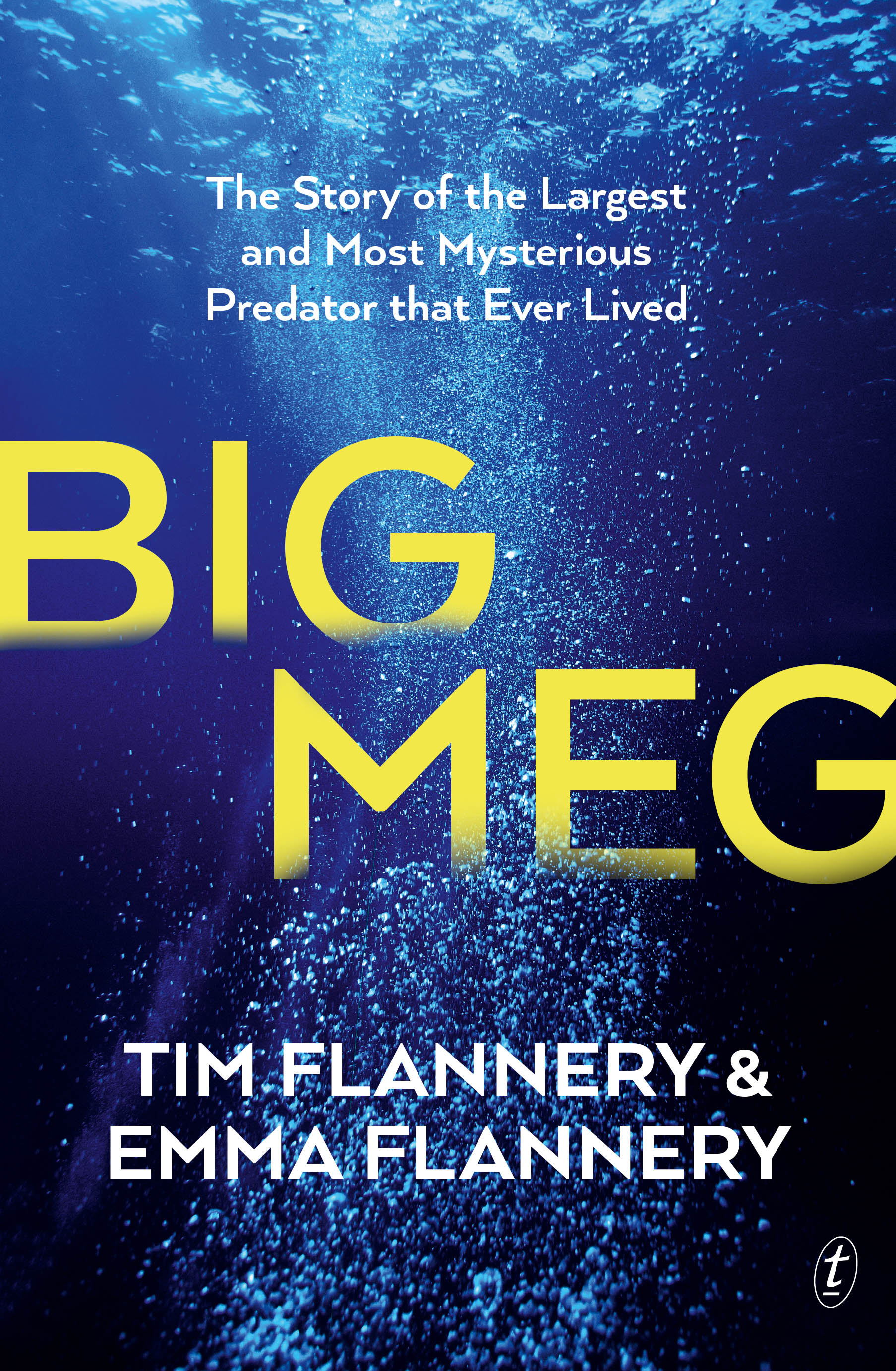
- Free Article: No
- Contents Category: Nature Writing
- Review Article: Yes
- Article Title: Meg-mythology
- Article Subtitle: A singular account of the prehistoric shark
- Online Only: No
- Custom Highlight Text:
Megalodon, the famed prehistoric shark, is the stuff of legends. Their huge teeth – as big as the palm of a hand – fuel unquenchable rumours of their continued survival, a plethora of implausible YouTube videos, and the devoted fascination of a legion of children.
- Featured Image (400px * 250px):

- Alt Tag (Featured Image): Danielle Clode reviews 'Big Meg: The story of the largest and most mysterious predator that ever lived' by Tim Flannery and Emma Flannery
- Book 1 Title: Big Meg
- Book 1 Subtitle: The story of the largest and most mysterious predator that ever lived
- Book 1 Biblio: Text Publishing, $35 pb, 200 pp
- Book 1 Cover Small (400 x 600):

- Book 1 Cover (800 x 1200):

It is always good to see an established writer encouraging new talent and injecting new vigour into their writing through co-authorship, even if, in this case, the Flannerys are keeping it in the family. Despite the co-authorship, though, this book offers a very singular narrative perspective, with the prevailing ‘I’ being that of Flannery Sr – Emma only appearing as a frightened six-year-old traumatised by Jaws.
This is not the only reframing of a collaborative or shared endeavour as a solitary achievement. The book opens with Tim Flannery’s ‘life-changing’ discovery of megalodon tooth in Muddy Creek in central Victoria as a sixteen-year-old, without mentioning the presence of three friends on that camping trip who shared his early enthusiasm for fossils. One of these companions was his cousin, John Long, with whom Flannery developed his youthful passion for fossils. Given that Long is also one of Australia’s leading palaeontologists, specialising in fish and shark evolution, the absence seems odd.
Narrative voice is always a balancing act in scientific writing. By its nature, science represents a broad, collaborative intellectual project built not so much on the shoulders of giants, as the ‘great man narrative’ would have us believe, but on the contributions of multitudes – from unacknowledged volunteers and citizen scientists to the intergenerational institutional teams of students, postgraduates, and professional scientists. In scientific writing itself, this multiplicity of contributors is acknowledged (at least in part) through the copious in-text references and an adherence to the plural first person ‘we’, so rigidly embedded as to give most scientists an almost pathological horror of using the term ‘I’.
Popular science is more challenging. Here, authors act as narratorial guides through complex material, which benefits from a singular and personal approach. Long-form popular science, in particular, provides a unique opportunity to survey and synthesise research from across a wide range of disciplinary silos comprising thousands of researchers. Individual acknowledgment of these voices would create a confusing cacophony, so balancing narrative simplicity with due recognition of the intellectual work of others is an eternal challenge for popular science writers. Big Meg slips between the personal anecdotes of the primary author and a largely omniscient and anonymous narration of science, with sources being restricted to the end matter. Unusually, there are no general acknowledgments in this book, other than the brief dedications; this reinforces the notion of the book as a singular individual construction. Megalodon research is a relatively small field, and the lack of acknowledgment of this rich diversity of expertise feels a bit niggardly.
The researchers who are mentioned tend to be older, historical, and male. The ‘index test’ of gender representation reveals ten males to one female, while the Palaeontological Association reports that thirty-five per cent of employed palaeontologists are women, with many more involved in other roles. None of the six females listed in the index is a scientist and the absence of Catalina Pimiento, one of the world’s leading young megalodon researchers, is particularly striking.
In recent decades, fascinating light has been shed onto the life of this remarkable beast through increasingly innovative methods by a growing international research community. Studies of the growth rings of an incredibly rare nine-metre skeleton revealed that megalodons were born two metres long, probably after eating most of their siblings in utero. Clusters of abundant juvenile megalodon teeth in food-rich shallow water areas demonstrated the existence of megalodon nurseries safe from their hungry elders. Foraging behaviour has been illustrated from the toothmarks and fragments embedded in the bones of small whales, while other researchers have shed light on the megalodon’s prodigious bite force, up to ten times stronger than that of a great white shark. Debate continues as to whether megalodons were restricted to warm coastal waters or whether their large size and fast metabo-lism made them transoceanic predators that played a major role in nutrient cycling.
Big may be dramatic but it is not always best in evolutionary terms. Ultimately, the megalodon’s voracious appetite may well have been its downfall with a cooling climate 2.6 million years ago that saw the extinction of abundant smaller marine prey, the rise of more effective competitors like great whites and killer whales, and the development of gigantic whales capable of escaping predation in colder and deeper waters.
The mystery of megalodon remains, though, and will almost certainly continue to generate considerable controversy in schoolyards for some time to come.


Comments powered by CComment